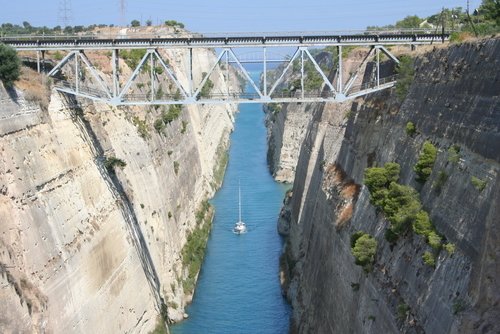 It is an ancient city about 48 miles west of Athens on the Isthmus of Corinth, the narrow strip of land that separates the Peloponnese from northern Greece. In ancient times it was a leading naval power as well as a rich commercial city and controlled the stone-paved roadway that connected the Saronic Gulf with the Gulf of Corinth.
It is an ancient city about 48 miles west of Athens on the Isthmus of Corinth, the narrow strip of land that separates the Peloponnese from northern Greece. In ancient times it was a leading naval power as well as a rich commercial city and controlled the stone-paved roadway that connected the Saronic Gulf with the Gulf of Corinth. The tradition of celebrating the Isthmian Games in honour of the sea god Poseidon started in 582 BC and at the Isthmian Games of 336 BC, the Greeks chose Alexander the Great to lead them in war against the Persians. It was partially destroyed by the Romans in 146 BC, but in 44 BC it was rebuilt under Julius Caesar. Roman Corinth prospered and was the capital of Roman Greece. The Apostle Paul visited Corinth in the 50s AD and later wrote two letters to the Christian community at Corinth (the books of 1 and 2 Corinthians in the New Testament). The invasion of the Herulians In 267 AD, initiated the decline and Alaric's invasion in 395–396, destroyed Corinth. After 1204, when Constantinople fell to the Fourth Crusade, Corinth was captured by the Turks in 1458; the Knights of Malta in 1612; the Venetians from 1687 till 1715 which marked the return of the Turks. The city finally came into Greek hands in 1822.
Systematic archaeological excavations of the area have brought to several monuments. The finds are exhibited in the on-site Archaeological Museum of Ancient Corinth.
After a severe earthquake Corinth was moved in 1858 from the site of ancient Corinth to its present position, where it was again rebuilt after a further earthquake in 1928 and a great fire in 1933. Like ancient times, today’s Corinth is the centre of commerce between northern and southern Greece and is the second largest city in the Peloponnese with several sites of historical & religious interest.
Attractions: Much of the city has been toppled by recurring earthquakes over the centuries and of what remains most of the buildings are Roman, a testimony to Julius Caesar’s rebuilding. Areas of interest include:
Attractions: Much of the city has been toppled by recurring earthquakes over the centuries and of what remains most of the buildings are Roman, a testimony to Julius Caesar’s rebuilding. Areas of interest include:
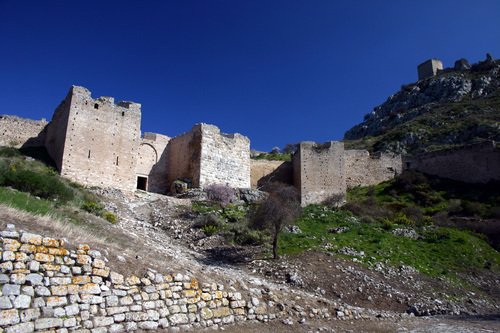 Acrocorinth –A superb natural acropolis, Acrocorinth was first fortified by the ancient Greeks. Everyone who came later -- the Byzantines, Franks, Venetians, and Turks -- simply added to the original walls. Today, there are three courses of outer walls; massive gates with towers; and a jumble of ruined houses, churches, and barracks. It is a short drive from the current city of Corinth.
Acrocorinth –A superb natural acropolis, Acrocorinth was first fortified by the ancient Greeks. Everyone who came later -- the Byzantines, Franks, Venetians, and Turks -- simply added to the original walls. Today, there are three courses of outer walls; massive gates with towers; and a jumble of ruined houses, churches, and barracks. It is a short drive from the current city of Corinth.On the Acrocorinth itself are ruins of the Temple of Aphrodite. The Temple of Aphrodite had more than 1,000 sacred prostitutes at one time, exemplifying the ancient city's reputation for luxury and vice. Also on Acrocorinth are the ruins of a stone minaret and ancient defensive walls.
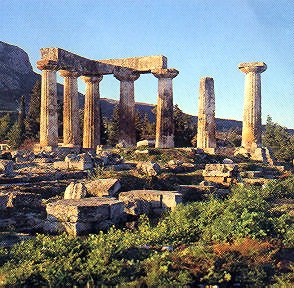 Temple of Apollo - one of the oldest stone temples in Greece, it is one of ancient Coronith’s most notable ruin. Built in 6th-century BC, today seven of the original 38 Doric columns still stand, on a hill that overlooks the extensive remains of the Roman Agora. Historical evidence points to the functioning of the temple even in the time of Apostle Paul (50s AD) but was eventually destroyed by earthquakes.
Temple of Apollo - one of the oldest stone temples in Greece, it is one of ancient Coronith’s most notable ruin. Built in 6th-century BC, today seven of the original 38 Doric columns still stand, on a hill that overlooks the extensive remains of the Roman Agora. Historical evidence points to the functioning of the temple even in the time of Apostle Paul (50s AD) but was eventually destroyed by earthquakes.Temple of Octavia – dedicated to the sister of Emperor Augustus 27 BC-14 AD it represents the imperial cult of Rome, which was spread throughout the empire. Today very little of the ruins remain
Sacred spring – it is located along the northern edge of the forum and was above ground in the 5th century BC but later building activities covered it. A secret passage near the sacred spring leads to a small shrine. The passage was might have been used by the priests.
Bema - Within the Roman Forum it is the public platform from where St. Paul had to plead his case when the Corinthians hauled him up in front of the Roman governor Gallio in 52 AD.
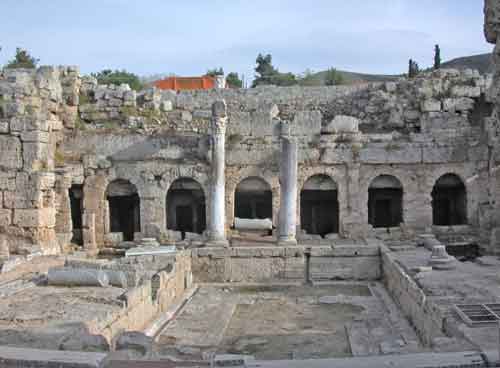 Peirene Fountain – it was the major source of water for Corinth. Significant ruins of it can still be seen today in the Roman Forum. Frescoes of swimming fish from a 2nd-century addition and a niche in the wall probably containing a statue can still be seen. The fountain is named after the legend of Peirene, a woman who wept so hard when she lost her son that she finally dissolved into the spring that still flows here.
Peirene Fountain – it was the major source of water for Corinth. Significant ruins of it can still be seen today in the Roman Forum. Frescoes of swimming fish from a 2nd-century addition and a niche in the wall probably containing a statue can still be seen. The fountain is named after the legend of Peirene, a woman who wept so hard when she lost her son that she finally dissolved into the spring that still flows here.Asklepieion – The sanctuary of the god of healing with a small temple (4th century BC) is located north of the theater, inside the city wall. It is set in a colonnaded courtyard with a series of dining rooms in a second courtyard. Terra-cotta votive offerings representing afflicted body parts (hands, legs, breasts, genitals, and so on) were found in the excavation of the Asklepieion, many of which are displayed at the museum.
The Archaeological Museum of Ancient Corinth – it contains a number of artefacts of religious interest, including inscriptions of Gallio and Erastus, both mentioned in the Book of Acts; a synagogue inscription, menorah reliefs, and votive offerings of terracotta body parts to Asklepios.
 Coronith Canal - A canal through the Isthmus of Corinth was begun under the emperor Nero in 67 AD., but not completed. Up to the 12th century, ships were dragged on rollers across the isthmus. The modern attempt at construction began in the 1870's following the successful opening of the Suez Canal The 4-mile (6-km) Corinth Canal was finally completed in 1893, providing an essential shipping route between the Ionian and Aegean seas.
Coronith Canal - A canal through the Isthmus of Corinth was begun under the emperor Nero in 67 AD., but not completed. Up to the 12th century, ships were dragged on rollers across the isthmus. The modern attempt at construction began in the 1870's following the successful opening of the Suez Canal The 4-mile (6-km) Corinth Canal was finally completed in 1893, providing an essential shipping route between the Ionian and Aegean seas. The Corinth Canal is considered a great technical achievement for its time. It saves the 400 kms long journey around the Peloponnesus for smaller ships, but since it is only 21 meters wide it is too narrow for modern ocean freighters. The canal is nowadays mostly used by tourist ships; 11,000 ships per year travel through the waterway. It is interesting to see the bridge across the east entrance to the canal which submerges for boats to cross over it. Useful Links: http://www.corinthcanal.com/
A nice place to stop for a coffee is the Perama Restaurant-Cafe and if you are lucky a ship will pass and you can watch the bridge go down.
Found this link useful for a walking tour of Corinth: http://www.planetware.com/do-it-yourself-tour/ancient-corinth-walking-tour-gr-ancwt.htm -
How to Reach: You can get to Corinth by car, coach or train. The route by the train is majestic as it passes through all the coastal villages offering a wonderful view and an enthusing landscape succession. The suburban railway line {proastiakos}from Athens Airport is the best way to reach Corinth in 90 mins direct from the airport.
Practical Information:
CORINTH(area code: +30 27410)
Municipality: 24-518
First Aid: 25-711
Port Authority: 28-888
Police Department: 22-143
Tourist Police: 23-282
Traffic Police: 23-333
Other Links: http://en.wikipedia.org/wiki/Corinth; http://www.ancientcorinth.net/; Ancient Corinth & Acrocorinth – Frommer's Attraction Review



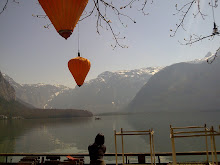
No comments:
Post a Comment